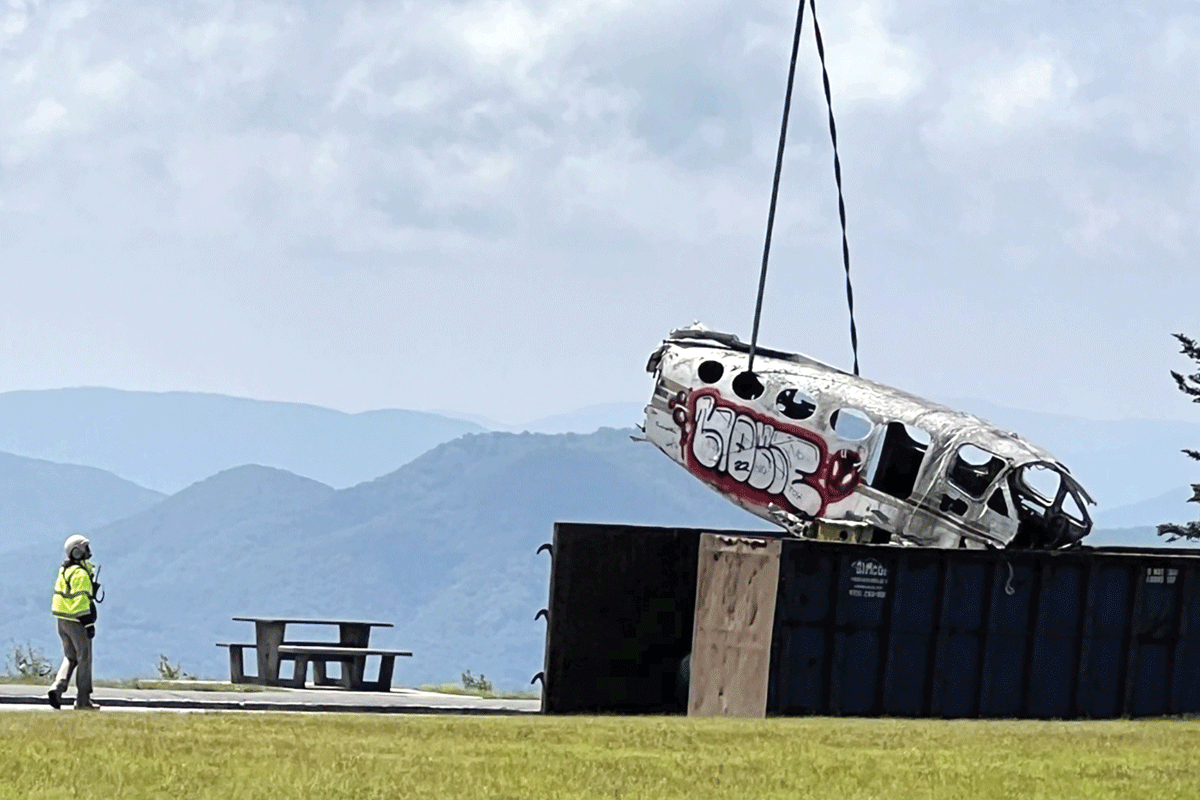Plane crash debris removed from Browning Knob
 Crash debris is removed via helicopter Tuesday, June 27, near Waterrock Knob on the Blue Ridge Parkway. NPS photo
Crash debris is removed via helicopter Tuesday, June 27, near Waterrock Knob on the Blue Ridge Parkway. NPS photo
In the early morning hours of Tuesday, June 27, the National Park Service airlifted the wreckage of a 1983 plane crash near Waterrock Knob that has proven popular with both hikers and travel writers.
The crash occurred on Nov. 24, 1983 — Thanksgiving Day — when the plane was just 11 miles from its destination in Sylva. It had left from West Chicago, Illinois, earlier that day, according to an investigation report from the National Transportation Safety Board. The night was dark and rainy, and the pilot was impaired, with a blood alcohol level of .04%. The final radar contact was at 6,100 feet about 1 mile from the crash site. Two people — the pilot and the plane’s single passenger — died when the plane struck the mountain.
The engines were removed from the site after the crash, but the fuselage, wings and other debris were left behind at the remote location on Browning Knob. Over the years, the site became an increasingly popular hiking destination, spurred on by attention from social media and various websites. According to the National Park Service, this high volume of use had caused safety concerns surrounding hikers getting lost or injured on the rugged trails, and resource concerns due to “severe damage” to rare and sensitive species.
While not in Park Service ownership at the time of the crash, the crash site is now part of the Blue Ridge Parkway after it was donated in 2016.
“While we understand the interest associated with this site, the resource damage and visitor safety issues presented too great a threat to take no action,” said Blue Ridge Parkway Superintendent Tracy Swartout. “Caring for these special places requires everyone’s cooperation, and we ask that everyone play a role in the protection of this place and not cause any further damage or injury to the resources or themselves by going off trail to find this site.”
Visitors should not continue hiking to the site, said Parkway Spokesperson Leesa Brandon, and over the coming weeks the Parkway will work with trail club partners and volunteers to take steps to restore the landscape.
Related Items
Because the crash site is so remote, removing the debris required a helicopter airlift. The nonprofit Blue Ridge Parkway Foundation funded the $37,000 cost.
“Given the level of resource damage in recent years at this site and our interest in supporting the National Park Service mission to protect these places in perpetuity, we are glad to help ensure protection of this habitat while also considering the safety of park visitors,” said Foundation CEO Carolyn Ward.
The area holds cultural significance for the Eastern Band of Cherokee Indians and is one of four high-elevation sites on the Parkway with a concentration of rare and sensitive species, including pinkshell azaleas. The area has been the focus of a large-scale initiative to add more than 5,000 acres to Parkway lands.









